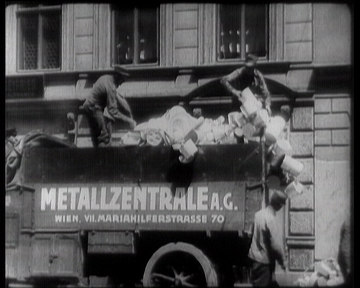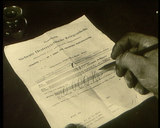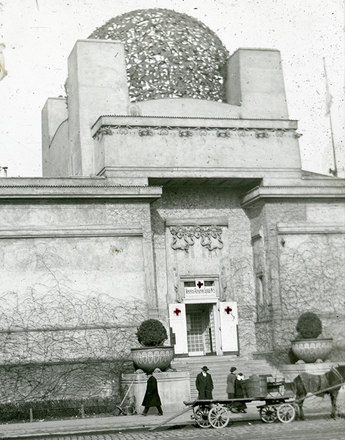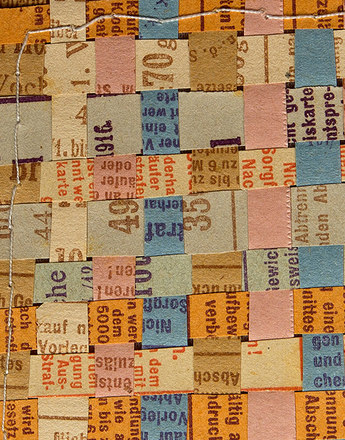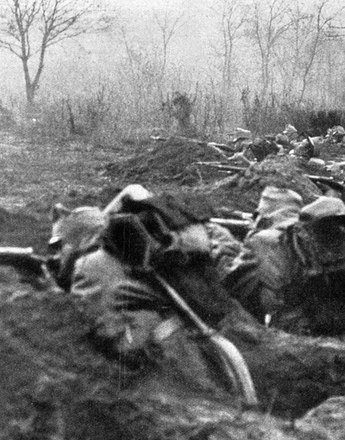The war propaganda reported on successful engagements by the troops and advances in production. In reality, the First World War had long turned into a battle for resources.
The Central Powers suffered a decisive defeat in terms of resources. Their coal, steel and iron production stagnated and ultimately declined. The shortage of raw materials forced the authorities to requisition metal appliances from private households. In Catholic Austria even the church bells were no longer sacred, as the documentary Metal Household Appliances at a Metal Collection Point (A c. 1917) shows. The discrepancy between the propaganda reports and the shortage of raw materials, goods and arms was apparent.
War bonds were an important instrument for raising money for the war effort. The first call for performance of a ‘financial military duty’ was made in November 1914. The 5 per cent interest made the war bonds a good investment and prompted large institutions and the middle classes in particular to subscribe. A total of eight series of war bonds were issued, bringing in a nominal 35 billion crowns. In this way the First World War used up a quarter to a third of the national wealth and ended up in a economic and monetary fiasco. Holders of war bonds ultimately found themselves with worthless bits of paper in their hands.
A number of propaganda films were made to persuade people to invest, all of them appealing to the conscience of the ‘subjects’. The first promotional film of this type in Austria-Hungary was made in November 1914. The range of war bond films extended from cartoons and caricatures to semi-fictional reality films, documentaries and comedies. They were shown in movie houses, mobile and field cinemas and were also sometimes included in the weekly newsreels.
Only one single fragment of these Austro-Hungarian war bond films has survived (The 7th War Bond Subscription, A c. 1917). The fragmented production advertises for the 7th war bond subscription and gives an insight, both in terms of content and production, into the often highly skilful scriptwriting. The reluctant grouchy prototype Austrian is satirized. Stereotypes are exaggerated, laughed at and ultimately converted. The familiarity of the situation appeals to large sections of the population (from workers to small businessmen, young girls to old women), enabling audiences to identify with what they see. The only close-up in the fragment clearly shows the aim of the film: the 7th war bond is available for subscription.
Translation: Nick Somers
Eigner, Peter/Helige, Andrea (Hrsg.): Österreichische Wirtschafts- und Sozialgeschichte im 19. und 20. Jahrhundert, Wien/München 1999
Sandgruber, Roman: Ökonomie und Politik. Österreichische Wirtschaftsgeschichte vom Mittelalter bis zur Gegenwart, Wien 1995
-
Chapters
- Imperial and Royal myth in film
- Presentation of the imperial household: pictorial icons
- What the films didn’t show 1: Social contrasts
- What the films didn’t show 2: Religious diversity
- What the films didn’t show 3: nationalist conflicts
- Lack of resources and wartime financial difficulties on film
- Film documents: after the disaster

